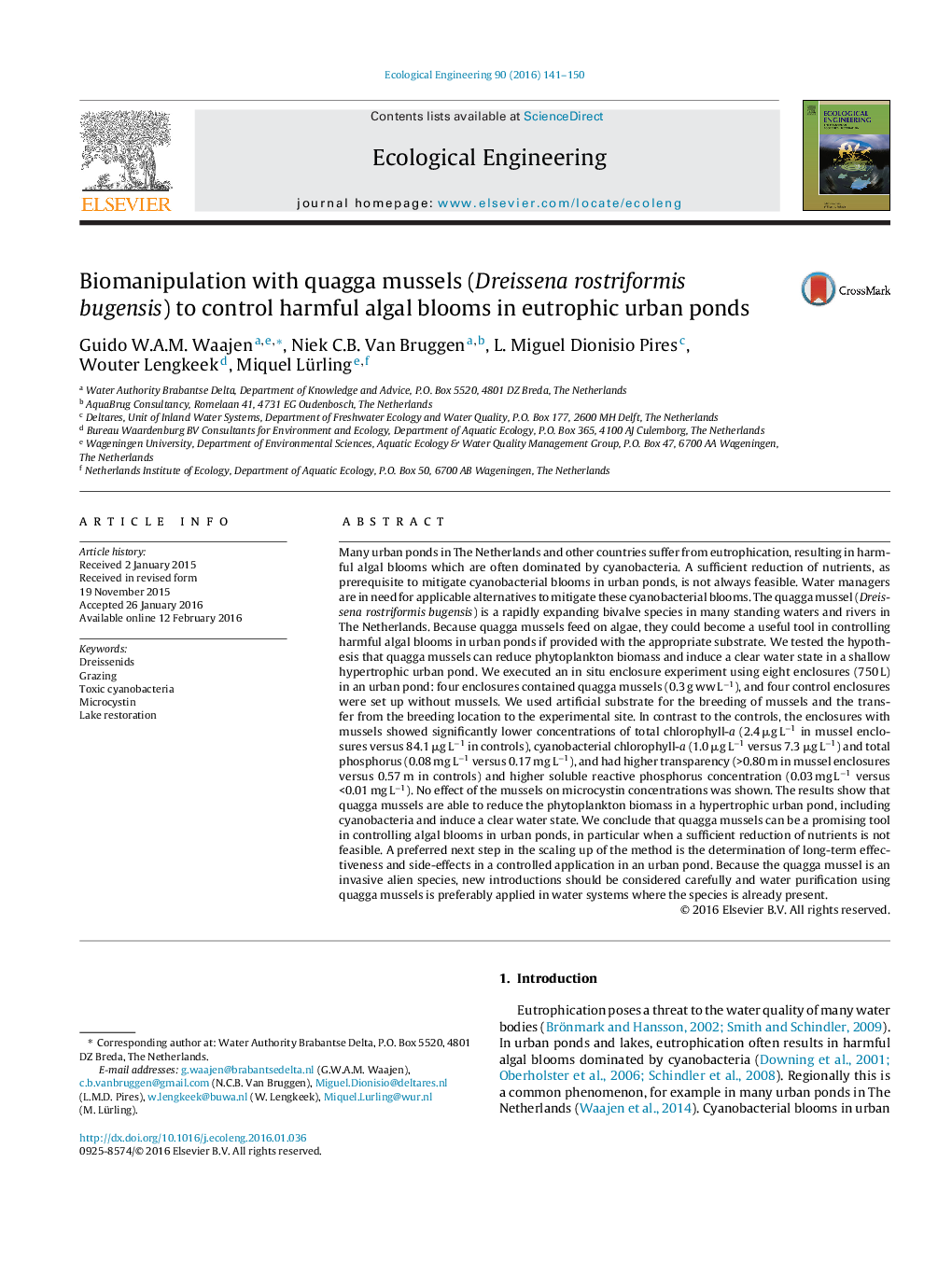| کد مقاله | کد نشریه | سال انتشار | مقاله انگلیسی | نسخه تمام متن |
|---|---|---|---|---|
| 4388657 | 1618009 | 2016 | 10 صفحه PDF | دانلود رایگان |

• Many urban ponds suffer from eutrophication resulting in harmful algal blooms.
• The efficacy of quagga mussels to reduce algal biomass was tested in enclosures.
• Quagga mussels reduce algal biomass including cyanobacteria.
• Quagga mussels improve the clarity of the pond water.
• Quagga mussels may be a promising tool in controlling algal blooms in urban ponds.
Many urban ponds in The Netherlands and other countries suffer from eutrophication, resulting in harmful algal blooms which are often dominated by cyanobacteria. A sufficient reduction of nutrients, as prerequisite to mitigate cyanobacterial blooms in urban ponds, is not always feasible. Water managers are in need for applicable alternatives to mitigate these cyanobacterial blooms. The quagga mussel (Dreissena rostriformis bugensis) is a rapidly expanding bivalve species in many standing waters and rivers in The Netherlands. Because quagga mussels feed on algae, they could become a useful tool in controlling harmful algal blooms in urban ponds if provided with the appropriate substrate. We tested the hypothesis that quagga mussels can reduce phytoplankton biomass and induce a clear water state in a shallow hypertrophic urban pond. We executed an in situ enclosure experiment using eight enclosures (750 L) in an urban pond: four enclosures contained quagga mussels (0.3 g ww L−1), and four control enclosures were set up without mussels. We used artificial substrate for the breeding of mussels and the transfer from the breeding location to the experimental site. In contrast to the controls, the enclosures with mussels showed significantly lower concentrations of total chlorophyll-a (2.4 μg L−1 in mussel enclosures versus 84.1 μg L−1 in controls), cyanobacterial chlorophyll-a (1.0 μg L−1 versus 7.3 μg L−1) and total phosphorus (0.08 mg L−1 versus 0.17 mg L−1), and had higher transparency (>0.80 m in mussel enclosures versus 0.57 m in controls) and higher soluble reactive phosphorus concentration (0.03 mg L−1 versus <0.01 mg L−1). No effect of the mussels on microcystin concentrations was shown. The results show that quagga mussels are able to reduce the phytoplankton biomass in a hypertrophic urban pond, including cyanobacteria and induce a clear water state. We conclude that quagga mussels can be a promising tool in controlling algal blooms in urban ponds, in particular when a sufficient reduction of nutrients is not feasible. A preferred next step in the scaling up of the method is the determination of long-term effectiveness and side-effects in a controlled application in an urban pond. Because the quagga mussel is an invasive alien species, new introductions should be considered carefully and water purification using quagga mussels is preferably applied in water systems where the species is already present.
Figure optionsDownload as PowerPoint slide
Journal: Ecological Engineering - Volume 90, May 2016, Pages 141–150